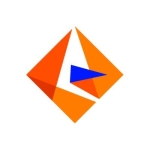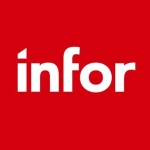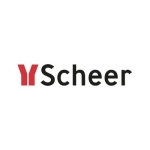What is our primary use case?
We have several SAP systems in our landscape that have different modules incorporated in it, and we are using this solution as a gateway for the integration within our landscape of both SAP and non SAP applications that are within the firewall and outside of the firewall.
The primary use case of this solution is as a gateway for all of the integrations.
How has it helped my organization?
Process Orchestration supports everything from simple workflows to complex practices by developing custom process applications.
Improved message processing - With the process Orchestration Single Stack version the throughput of message processing is improved. This is due to the fact that until now the messages were recorded in both the ABAP and Java databases.
Improved Alert Mechanism - Alerts can be filtered by message content.
SAP Process integration Test (PIT) tool - The PIT Tool is a framework with which you can set up automatic tests for process integration scenarios. It really helped us in testing the interfaces post-migration and saved a lot of effort and time.
B2B integration is easier with SAP B2B add-on.
ccBPM's were migrated to NWBPM which Supports human and automated tasks.
What is most valuable?
With the latest version, what I find to be the most valuable are the REST, SuccessFactors, and Ariba Network adapter, OAuth 2.0 authentication,x-csrf-token, Improved alert mechanism.
Message deletion option.
NWBPM, BRM and B2B add-on.
The NWBPM is also valuable. In the previous version, they had ccBPM, which caused performance degradation issues. With the migration into the new version, the performance has improved and our customers are pleased with this improvement.
They have rules to configure directly in the integration directory that can be done within the interface itself, instead of configuring within the NWA and manually sending it to the users.
What needs improvement?
Dell Boomi and MuleSoft have dedicated application based connectors. All of these connectors work on the same protocols such as SOAP, HTTP, and REST. They have dedicated application connectors that can be for Amazon, Salesforce, ServiceNow, Slack, Google Cloud, Microsoft Azure, Workday, etc that are readily available to use.
When it comes to SAP PO, SAP provides SOAP, HTTP, or the REST-based adapters, which we can use to integrate with any of the above-mentioned applications / Webservices / APIs, etc. have to bit-customize to integrate with those particular applications. This is true when using REST, SOAP, or HTTP.
I feel both application-specific adapters and SAP provided adapters (SOAP /HTTP /REST) adapters, They Still use the same set of protocols to integrate/Connect with respective applications.
Customers will think that they had a dedicated application adapter that will make our life easier. We can just plug in, play, and use it. This is the way sales and customers think and they will tend to go with these tools.
I feel that support is an area that needs improvement. They need to improve the response time and address the customer's issues as soon as possible.
Instead of maintaining so many tools, they should explore all of the features and offer just one tool. It would be good and would help customers as well as SAP.
Since they have a cloud version of integration to SAP CPI, it would be a good idea to provide a migration tool where we can install that tool and migrate the existing interfaces from Process Orchestration to CPA. Customers would appreciate the flexibility, and it would reduce the project cost and manual effort time.
For how long have I used the solution?
We were using the 7.3 dual-stack version and recently migrated to Process Orchestration 7.5 (Single-Stack)version. We have been using it for approximately Nine months.
What do I think about the stability of the solution?
This solution is stable, we have not had any issues.
What do I think about the scalability of the solution?
We have not yet explored the scalability as we are still in the evaluating phase.
How are customer service and technical support?
Technical support response time is slow. It takes some time to get a response.
I have noticed that in many cases, even though we have priority one or priority two tickets, they simply change that to decrease the level of priority from P1 to P2, and from P2 to P3.
It can take a week to get a response to tickets.
Which solution did I use previously and why did I switch?
No, We have not used any other Middleware solutions previously. We have implemented all the interfaces in SAP PI/PO itself.
How was the initial setup?
With the previous version, it was a bit difficult and took approximately one week to install and set everything up. When it comes to Process Orchestration, it is a Java-based system that makes it easier when it compares to a dual-stack system, and since we are hosting it in Azure Cloud, it's not a large burden.
Deployment is less than a week with the updated version. Sizing and the hardware takes a matter of seconds when it is approved and once they procure it.
We are handling the deployment.
What about the implementation team?
We have implemented it with the vendor team.
What's my experience with pricing, setup cost, and licensing?
There are fees in addition to the licensing.
If we want to use B2B, which we use for sending and receiving messages to EDA, then there is an additional charge.
EDA is partners with B2B and you have to integrate them. You have to procure that separately because it is not included in the standard PO license.
Everything else is by default and B2B is the only addon that we have to pay for it.
Which other solutions did I evaluate?
We are currently evaluating several solutions, such as Dell Boomi, MuleSoft, and Informatica Cloud. These are the three tools that we are evaluating and will be comparing with SAP Processing Orchestration and SAP CPI.
We will be evaluating how much flexibility there is to move the existing logic. We have to consider both the migration from SAP to a third-party or from a third party Middleware to SAP. It may not be easy, as the main transformation logic that we have built on SAP propriety tools and the other tools. They may not have the compatibility, and we will have to read all of the logic again in those applications.
This all has to be considered before we can make a decision.
What other advice do I have?
We are still in the evaluating phase and we are still evaluating other tools that are available. Based on that, we will be having a round table discussion in a meeting to discuss the outcome and finalize whether we will migrate the interfaces or go with Process Orchestration.
They want to evaluate and list the pros and cons of all of the tools.
As per the automation roadmap, we are planning to move everything into the cloud. We are just evaluating the cloud, particularly tools that are available. Even though we are hosting on Azure Cloud services, it is still on-premises.
They have introduced SAP CPI, and I am not sure whether SAP Process Orchestration is going to be available for much longer as they are investing more into SAP CPI.
SAP CPI is the new IPaas tool that is improving and not a mature tool as SAP Process Orchestration. SAP is continuously improving and adding more features to SAP CPI.
Many customers are confused, whether they should invest in procure Process Orchestration or SAP CPI.
There are some clients that invest in both SAP CPI and Process Orchestration. because due to the current limitations in SAP CPI, they are not able to migrate all the interfaces from SAP PI/PO to SAP CPI.
If customers are considering investing in both, then they might want to think about the licensing costs. It will be a burden for them.
It will good to have a single middleware tool, instead of multiple middleware tools.
I don't understand why the product companies are releasing multiple middlewares to handle various integrations like A2A, B2B, and EDI integrations, etc.
It will be a burden for the organizations to procure multiple middlewares for their various integration needs. They have to invest more money in licensing and maintenance.
I feel it's a bad practice to develop several middleware tools from the same organization. Instead of developing multiple middleware tools, It would be better to have all of those features into one middleware instead of providing multiple middleware tools? It's more of a business gimmick.
I think SAP seems to be following along the same path as they have many middleware tools within SAP.
If you see the SuccessFactors, they have a SuccessFactors integration center (IC), where they can integrate the applications using SFTP / REST / SOAP protocols. The IC features are very limited to develop interfaces, it doesn't have flexible monitoring like SAP PO or SAP CPI.
Of course, the Integration center (IC) is having some advantages, but it will not suffice for the customer to all the integrations using IC and they have to still invest in Middleware.
The SAP CPI area has to improve a lot when compares with the other middleware.
I would rate this solution an eight out of ten.
Which deployment model are you using for this solution?
Private Cloud
If public cloud, private cloud, or hybrid cloud, which cloud provider do you use?
Microsoft Azure
Disclosure: My company does not have a business relationship with this vendor other than being a customer.














